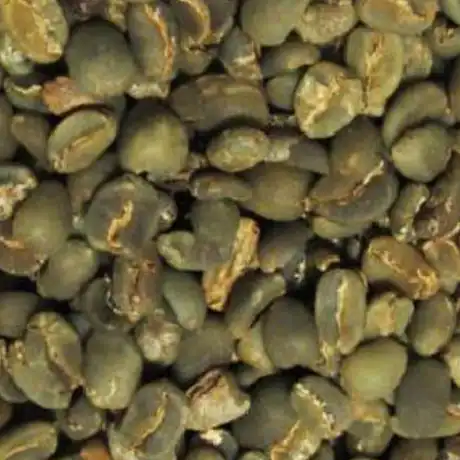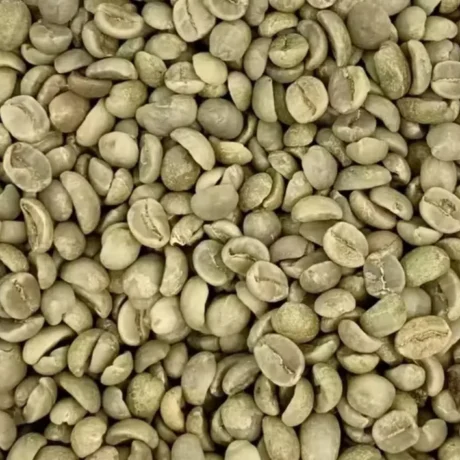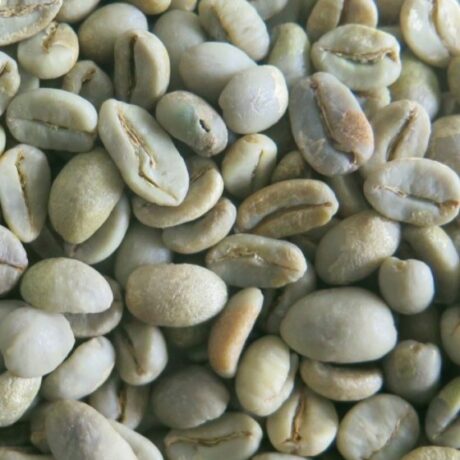Coffee is not just a beverage; it is an identity signal. Each person’s pattern of frequency, caffeine strategy, flavor preference, brew method, and gear forms a clear persona. This guide classifies 15 kinds of coffee drinkers with precise traits, pain points, and actionable upgrades. Every section includes internal resources so you can go deeper and master your cup.
The Coffee Drinker
A coffee drinker is defined by measurable attributes:
- Frequency: occasional, daily, heavy
- Caffeine strategy: regular, high-caf, decaf
- Flavor orientation: clarity, body, sweetness, acidity
- Brew family: immersion, percolation, pressure, instant/pod
- Convenience vs craft: speed-first to ritual-first
- Milk stance: dairy, plant-based, or black
- Sustainability posture: sourcing, processing transparency, compliance
Mastery starts with brew fundamentals—ratio, grind, temperature, agitation, and contact time. Lock these in and every style improves. For precise ratios, use this practical reference: Perfect coffee measurements. For pour-over timing and flow control, follow Brewing time for pour-over coffee. For French press success every time, use The art of French press coffee ratio.
1) The Speed-First Sipper
Defining traits: Time rules the routine. Coffee equals immediate fuel.
Go-to drinks: Americano, batch brew, strong instant.
Pain points: Flat flavor, bitterness from over-extraction, energy dip.
Upgrades that stick:
- Standardize a two-minute routine with a compact brewer (AeroPress or pod).
- Fix a 1:15–1:16 ratio; adjust grind until bitterness disappears.
- Store beans correctly to keep flavor intact: Why a coffee canister matters and Freezing coffee beans.
2) The Black-Coffee Purist
Defining traits: No milk, no sugar, maximal clarity.
Go-to drinks: Espresso, long black, filter.
Pain points: Paper taste, sourness from under-extraction, water variability.
Upgrades that stick:
- Rinse paper filters thoroughly and stabilize water at 90–96°C; see Brewing time for pour-over coffee.
- Explore washed single origins for structure and florals: Sumatra coffee taste & best brewing methods and A guide to Toraja coffee.
3) The Weekend Wanderer
Defining traits: Café visits as leisure. Flavor is relaxation.
Go-to drinks: Cappuccino, seasonal specials, filter flights.
Pain points: Inconsistent cafés, oversized milk drinks that bury espresso.
Upgrades that stick:
- Learn two cafés that respect milk texture and espresso strength; when brewing at home, apply the 4-minute press with this French press ratio guide.
- Keep a small 250 g bag and store it right: Guide to extending the life and aroma of coffee beans.
4) The Caffeine Reliant
Defining traits: Performance and focus are non-negotiable.
Go-to drinks: Double espresso, strong filter, cold brew concentrate.
Pain points: Jitters, midday crash, inconsistent dose.
Upgrades that stick:
- Split caffeine into smaller, scheduled servings and switch to decaf after lunch; scan How much caffeine is in a cup of coffee and Effects of coffee on health and addiction.
- Use Cold brew facts & benefits to batch brew a smooth, predictable concentrate.
5) The Decaf Devotee
Defining traits: Loves coffee’s flavor, avoids the stimulant.
Go-to drinks: Decaf espresso, decaf flat white, decaf filter.
Pain points: Old decaf stock, muted sweetness.
Upgrades that stick:
- Buy fresh decaf with transparent processing and grind slightly finer to improve extraction; confirm dose using Perfect coffee measurements.
- Keep storage airtight and cool: Store coffee beans.
6) The Ultimate Appreciator
Defining traits: Origin literacy, process curiosity, cupping vocabulary.
Go-to drinks: Single-origin pour-over, straight espresso.
Pain points: Bag-to-bag variability, water chemistry plateaus.
Upgrades that stick:
- Standardize water and brew logs; use SCA cupping form to sharpen sensory notes.
- Explore Indonesia’s specialty spectrum with Sumatra coffee and Indonesia specialty coffee: which one is the best?.
7) The Customizer (Barista’s Challenge)
Defining traits: Complex requests, syrup stacking, alternative milks.
Go-to drinks: Oat-milk vanilla latte, temperature-specific milk, half-caf.
Pain points: Balance collapses easily; milk curdles with high-acidity espresso.
Upgrades that stick:
- Choose one barista-grade plant milk and standardize temperature. Read Specialty coffee processing to predict acidity and milk compatibility.
- Maintain machine performance to deliver consistency: Coffee machine maintenance.
8) The Luxury Seeker
Defining traits: Prestige and rarity with transparent stories.
Go-to drinks: Limited micro-lot pour-over, rare process espresso.
Pain points: Paying for hype, inconsistent rare lots.
Upgrades that stick:
- Demand elevation, process, and cupping scores on labels; validate with Cup above the rest: specialty coffee grading.
- Rotate Indonesian rarities: Lampung coffee and Aceh Gayo selection guide.
9) The Instant Pragmatist
Defining traits: Portability, simplicity, zero mess.
Go-to drinks: Freeze-dried specialty instant, 3-in-1.
Pain points: Thin body, stale aroma.
Upgrades that stick:
- Build body with concentrate-style prep and hotter water; measure exactly via Perfect coffee measurements.
- Keep sachets sealed and dry; storage rules here: Why a coffee canister is important.
10) The Plant-Milk Champion
Defining traits: Dairy-free habit or intolerance; texture and sweetness control.
Go-to drinks: Oat flat white, almond latte, soy cappuccino.
Pain points: Curdling with bright espresso, cereal notes overshadowing coffee.
Upgrades that stick:
- Use barista-grade plant milks with higher protein, steam to 55–60°C, and pair with medium roasts. Learn how processing shapes acidity in Specialty coffee processing.
- Keep beans fresh to cut through milk: Guide to extending life and aroma.
11) The Classic Espresso Loyalist
Defining traits: Short, intense, zero fluff.
Go-to drinks: Single or double espresso, ristretto.
Pain points: Channeling, sour shots, grinder retention.
Upgrades that stick:
- Lock a 1:2 brew ratio in 25–30 seconds; refine distribution and puck prep, then benchmark with SCA cupping form for sensory calibration.
- Keep equipment clean and predictable: Coffee machine maintenance.
12) The Cappuccino Regular
Defining traits: Balanced sweetness and foam comfort.
Go-to drinks: Cappuccino, flat white.
Pain points: Oversized mugs, weak espresso-to-milk ratio.
Upgrades that stick:
- Use 150–180 ml cups, texture glossy microfoam, and hold a solid espresso base. Dial taste clarity with Sumatra coffee brewing guidance.
13) The Cold Brew Planner
Defining traits: Batch brewing, smoothness, zero bitterness.
Go-to drinks: Cold brew concentrate over ice, nitro.
Pain points: Over-dilution, flat aromatics.
Upgrades that stick:
- Steep a 1:5–1:6 concentrate for 12–14 hours and dilute 1:2; get the science in Cold brew facts & benefits.
- Use light-to-medium roasts for brightness and fruit.
14) The Latte-Art Lover
Defining traits: Visual craft, texture precision, café culture.
Go-to drinks: Latte, mocha, flavored seasonal lattes.
Pain points: Overheated milk, lost crema, unstable foam.
Upgrades that stick:
- Purge, position, and whirlpool; stop at ~60°C; pour immediately. If you brew espresso at home, keep the machine performing like day one with Coffee machine maintenance.
15) The Home-Lab Tinkerer
Defining traits: Scales, timers, refractometers, repeatability.
Go-to drinks: Dialed-in shots, experimental filters.
Pain points: Analysis paralysis, gear sprawl.
Upgrades that stick:
- Change one variable per session; log results. Use Perfect coffee measurements as your baseline, then explore process nuances with Specialty coffee processing.
- Benchmark origins method-by-method: start with Discover Sumatra.
Brewing Fundamentals That Improve Every Type
- Ratios that never fail:
- Filter: 1:15–1:16
- French press: 1:12–1:15
- Espresso: 1:2 yield baseline
- Cold brew concentrate: 1:5–1:6
Validate and adjust with Perfect coffee measurements.
- Time as a control lever:
- Master drawdown and contact time with Brewing time for pour-over coffee.
- Storage that preserves aromatics:
- Opaque airtight canister, cool/dark shelf: Why a coffee canister is important.
- For long holds, portion and freeze coffee beans.
- Caffeine facts that guide dosing:
- Understand per-cup content and timing with How much caffeine is in a cup of coffee and consider wellness in Effects of coffee on health and addiction.
Origin Exploration for Flavor Identity
Indonesia offers decisive profiles that map cleanly to personas:
- Sumatra: deep, earthy, chocolate-spice structure for milk drinks. Start here: Sumatra coffee and Taste & best methods.
- Aceh Gayo: sweetness, herbal complexity, and altitude clarity; purchase confidently with Choosing the best Aceh Gayo green coffee beans.
- Toraja: elegant acidity and spice; align with pour-over in A guide to Toraja coffee.
- Lampung: bold intensity for espresso and milk; learn more in Lampung coffee.
Sustainability, Compliance, and Farm Practices
Responsible drinking starts at origin:
- Understand deforestation and traceability requirements with EUDR regulations.
- See how Intercropping in coffee cultivation (Tumpang Sari) supports soil health and biodiversity.
- Review production best practices in Sustainable coffee production.
Gear and Maintenance by Intent
- Espresso households: consistent steaming and extraction require routine upkeep; follow Coffee machine maintenance.
- Automatic excellence: compare capabilities in JURA coffee machines: a comprehensive guide and Ninja coffee maker guide.
- Bean selection for new setups: secure quality supply with How to find the best specialty coffee beans suppliers for your coffee shop and origin primers above.
How to Identify Your Type (Step-by-Step)
- Log your last ten cups with time, brew, and reason.
- Choose your primary goal: speed, clarity, texture, or smoothness.
- Pick a brew family that serves that goal.
- Set one baseline ratio and stick to it for a week: Perfect coffee measurements.
- Align roast to method using the guidance in Specialty coffee processing and regional profiles above.
- Stabilize storage with a proper canister and optional freezing routine.
- Iterate one variable at a time and keep notes; use SCA cupping form to build a precise flavor vocabulary.
FAQs
Which type benefits most from cold brew?
The Caffeine Reliant and Cold Brew Planner gain the most stability and smoothness. Follow Cold brew facts & benefits to set exact steep times and dilution.
How do I remove bitterness from my morning cup?
Coarsen the grind slightly, shorten contact time, and fix your ratio using Perfect coffee measurements. If you brew pour-over, correct drawdown with Brewing time for pour-over coffee.
What is the most reliable French press recipe?
Use a 1:15 ratio, 4-minute steep, and a gentle plunge. Lock this in with The art of French press coffee ratio.
How do I keep beans fresh for weeks?
Use an opaque airtight canister away from heat and light. For longer storage, portion and freeze coffee beans. Get the full storage playbook in Guide to extending the life and aroma of coffee beans.
How much caffeine is in a standard cup?
Plan your intake using How much caffeine is in a cup of coffee and adjust your schedule with Effects of coffee on health and addiction.
Which origins work best for milk drinks?
Start with Sumatra coffee and Lampung coffee for depth and chocolate-nut profiles. For layered sweetness and spice, explore Toraja.
How do I evaluate a premium micro-lot?
Check grading and cupping transparency with Specialty coffee grading, then compare against regional benchmarks above to confirm value.





